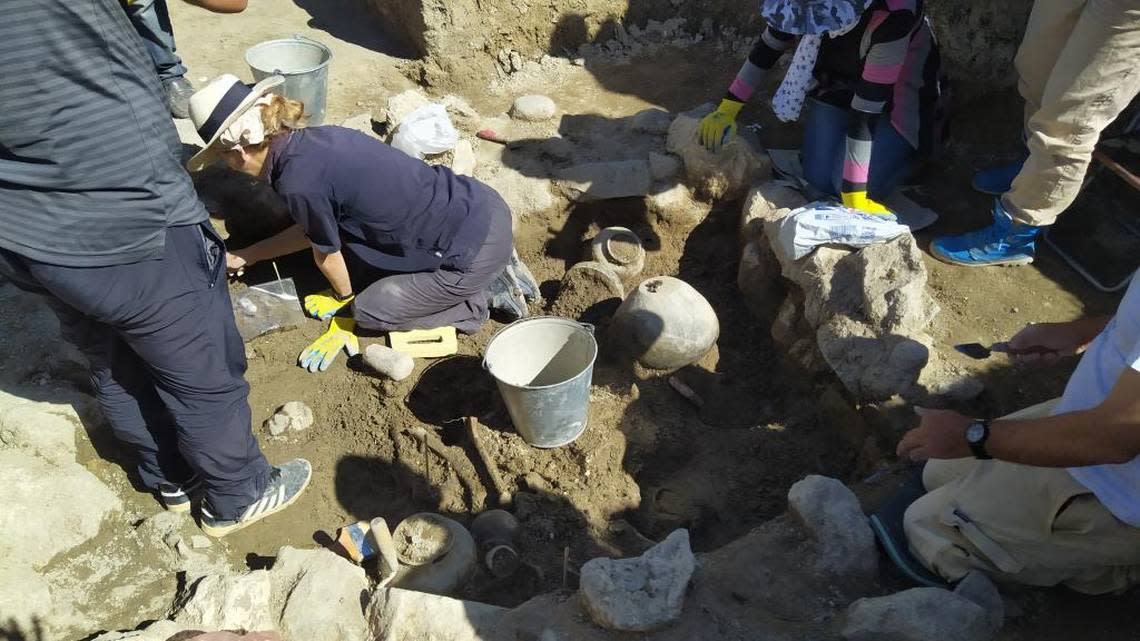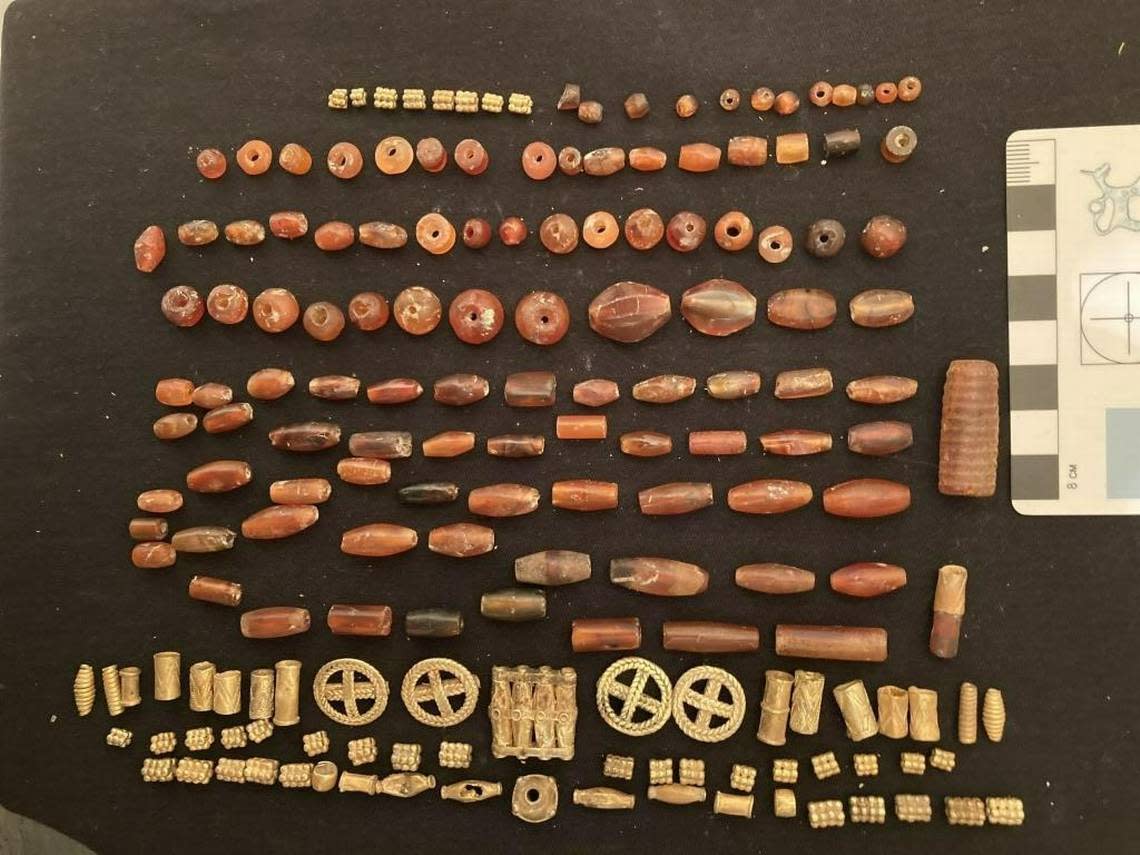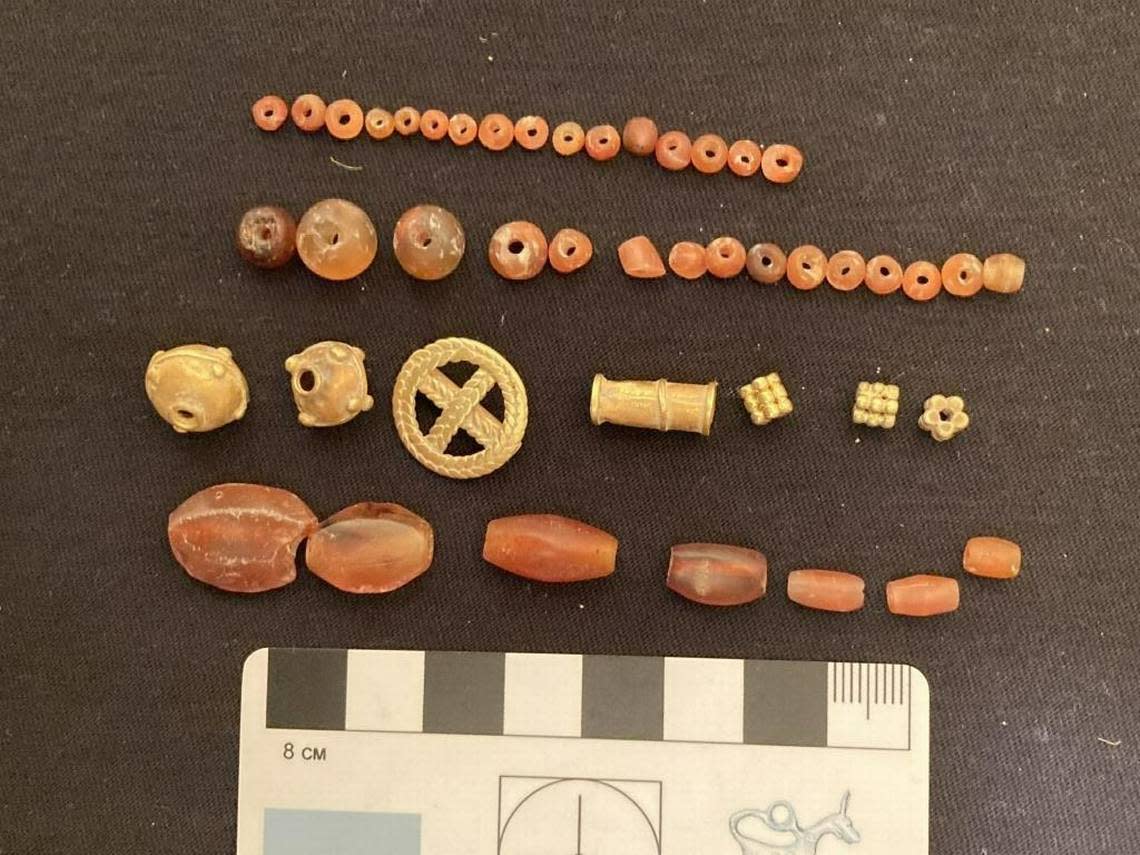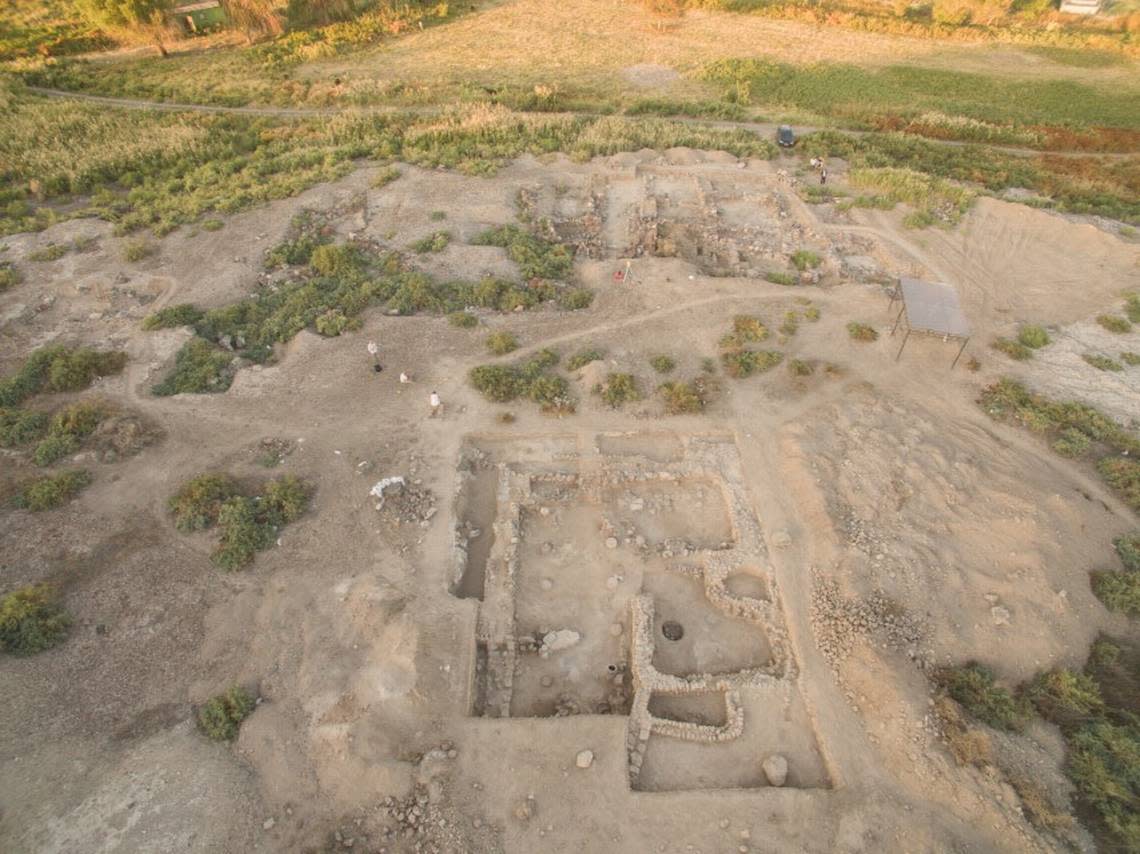3,200-year-old tomb — filled with gold treasure — unearthed in Armenia, photos show
Scouring an ancient necropolis in Armenia, looters dug up burial sites and kept whatever valuables they found. As the centuries stretched on, once-elaborate tombs were picked clean one by one.
For whatever reason, one particular tomb went unopened for millennia.
The Metsamor archaeological site in Armenia, near the border with Turkey, was inhabited from the 4th millennium B.C. until the 17th century, according to a news release from Science in Poland. Layers upon layers of human life have accumulated at the settlement.
The oldest portion of Metsamor was a settlement surrounded by walls with a necropolis, or cemetery, nearby, experts said.
A joint team of Polish and Armenian archaeologists decided to excavate the necropolis, according to the Feb. 27 news release.
The archaeologists uncovered a stone tomb where two people were buried, according to a news release from Armenia’s Service for the Protection of Historical Environment and Cultural Museum-Reserves. The tomb was just almost a square, measuring about 8 feet by 7 feet.

The floor of the tomb was made of stones with a funeral bed placed on top, archaeologists said. The two skeletons were found touching at the hip but facing opposite directions.
A man and a woman, most likely a couple, were buried in this tomb between 1300 and 1200 B.C., Polish archaeologists said. The well-preserved bones indicated the pair had slightly shrunken legs and died between the age of 30 and 40.
Researchers don’t know how the couple died, but they died together, archaeologist Krzysztof Jakubiak told Science in Poland. Their tomb showed no signs of being reopened — either for a second burial or for looting.
Buried around the pair was a rich collection of treasure. Archaeologists found over 100 jewelry beads, including several gold pendants. Photos show the delicate pieces.

The mixture of beads, mostly made from gold and carnelian, a red-brown stone, likely formed three necklaces, Jakubiak said in the release.
A vase imported from the Syrian-Mesopotamian region was also uncovered from the 3,200-year-old tomb, researchers said. This imported vessel was one of about a dozen pottery items found.
A bronze bracelet was found around the wrist of one skeleton; a thin, tin ring found on the other’s wrist, Armenian archaeologists said.

Archaeologists have excavated about 100 burials at Metsamor’s necropolis, according to Science in Poland. Most of the graves were looted, leaving just a few untouched.
Beyond the necropolis, Metsamor also boasts a fortress complex used from the 11th to 9th century B.C., Polish archaeologists said. This complex is surrounded by temples with seven sanctuaries.
The ruins of a large columned hall, likely a public building, dating from this Iron Age period were also found at the site, according to a news release from Polish Centre of Mediterranean Archaeology at the University of Warsaw. Photos show the dusty remains of this structure.

Over the millenia, Metsamor emerged as an economic, cultural and spiritual urban center, according to the Polish Centre. Excavations have been ongoing at the site for over a decade.
Metsamor is about 20 miles southwest of Yerevan, the capital of Armenia.
Google Translate was used to translate news releases from Science in Poland, the Polish Centre of Mediterranean Archaeology at the University of Warsaw and Armenia’s Service for the Protection of Historical Environment and Cultural Museum-Reserves.
Spells for the afterlife found on 52-foot papyrus scroll from ancient Egyptian tomb
4,000-year-old city along Chinese river is a breakthrough for understanding ancient life
Traveler buried his gold and never returned — then volunteer found it 800 years later
